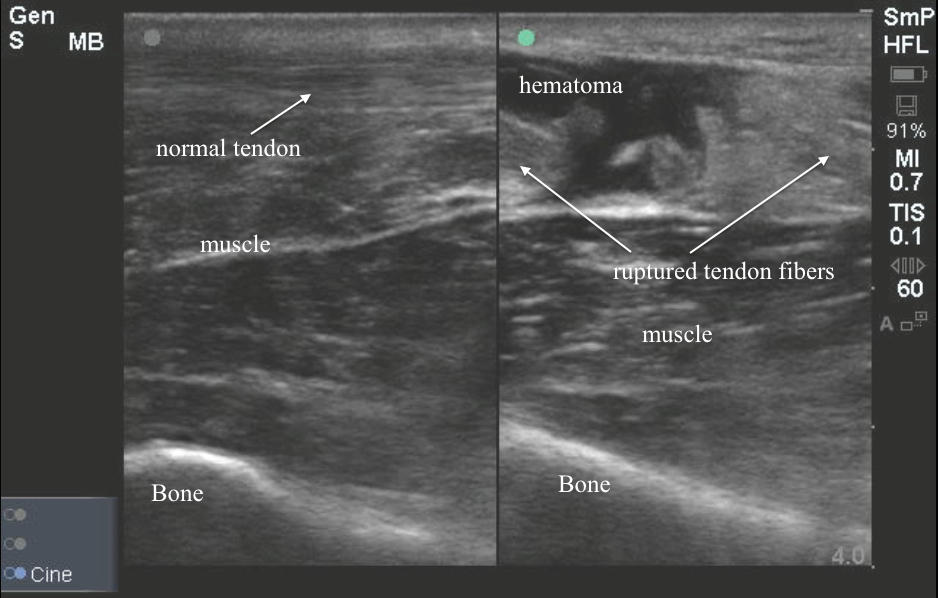The IOW this week comes from Dr. Nicole Franks. Her patient is a 48-year-old male who presented to the ER with ankle pain and difficulty with ambulation after an injury while playing tennis. He reports he heard a pop when the injury occurred.
Bedside ultrasound below was obtained. To get this image place the patient in a prone position. The high-frequency linear probe is placed over the Achilles tendon in a long axis orientation. Normal tendons have a fibular appearance with many tightly packed hyperechoic linear echoes as seen on the left. In the short axis, if you rotate the probe 90 degrees, these echoes will take on a stippled appearance. In the image to the right, we see a large hypoechoic gap between tendon fibers which represents hematoma. The tendon fibers are irregular and contracted. If you squeeze the calf during your exam this defect will enlarge. If you are not sure what you are seeing its always helpful to look at the contralateral normal tendon. Achilles tendon rupture is typically a clinical diagnosis, but findings can be subtle and the diagnosis is missed in up to 20% of cases. Ultrasound can be a useful bedside adjunct.
In this case, the diagnosis of Achilles tendon rupture was made rapidly at the bedside, the patient was splinted, and orthopedic follow-up was arranged.
Image 1

Assistant Professor
Ultrasound Fellowship Director
Department of Emergency Medicine
Emory University SOM
6/18/2014

